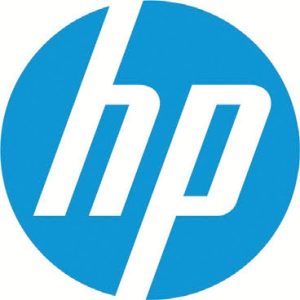Digital Printing: Powering India’s Packaging Revolution
Packaging today mirrors the evolution of India’s print industry – vibrant, fast-growing, and deeply innovative. As start-ups and small businesses redefine consumer experiences, digital printing has emerged as their enabler of choice, allowing high-quality, low-volume, and sustainable packaging at unmatched agility. A. Appadurai, Country Manager for Indigo and Inkjet Business Solutions, HP India, in conversation with Varsha Verma, shares how HP Indigo is driving this transformation—empowering entrepreneurs, advancing sustainability, and shaping the future of print packaging across India.
“HP is actively contributing to the ‘Make in India’ and ‘Atmanirbhar Bharat.’ For any small product, packaging is very, very much required so that they can reach audiences and digital printing is making it happen,” says Appadurai. “Indirectly, HP is empowering women and self-help groups to compete domestic and international players.”
Packaging is the epitome of all the growth that is happening today in the print industry. A. Appadurai, Country Manager for Indigo and Inkjet Business Solutions, HP India, shares more.
Digital printing for packaging needs of start-ups…
 “India will become one of the largest countries in the world. There are close to 72,000 businesses in India of which there are 2,000 registered start-ups in India. Besides, there are almost 3X more unregistered start-ups in India. All these start-ups need high quality packaging for the products to stand out of the shelves in the supermarket,” shares Appadurai.
“India will become one of the largest countries in the world. There are close to 72,000 businesses in India of which there are 2,000 registered start-ups in India. Besides, there are almost 3X more unregistered start-ups in India. All these start-ups need high quality packaging for the products to stand out of the shelves in the supermarket,” shares Appadurai.
“Now, a startup is not sure about their business plans for the next three months, but the conventional packaging printers are printing for the next three years,calling it minimum order quantity. That is where digital printing breaks the mould, and it says no MOQ printing. Our minimum print quantity could be one or as per the requirement of brand, which allows startups to access premium packaging solutions and effectively compete with established industry leaders. Many home-made chocolate brands and other artisanal products are getting sold at multiple times the price of the regular chocolates. Homegrown coffee brands like Beanly Coffee, Amyra Farms VIDI Coffee, amongst others are also leveraging HP Indigo technology for their packaging needs. This is not limited to coffee and chocolates, but span across beverages, premium food products, and adjacent FMCG categories. That’s the kind of market that HP is going after in the digital packaging side. This business is, I would say, is growing in triple digits as far as page volume is concerned, making it one of the fastest growing businesses is the packaging side of the business,” shares Appadurai.
On digital packaging printing…
 “The packaging business is broadly divided into three areas: one is self-adhesive labels, which is most of it is happening in the 330 mm width space. The second is the flexible packaging market, essentially done in the conventional technology, which are wide width, and I would say most un-environment friendly technology. And the third big area is the mono-cartons or the folding carton as we call it,” he shares.
“The packaging business is broadly divided into three areas: one is self-adhesive labels, which is most of it is happening in the 330 mm width space. The second is the flexible packaging market, essentially done in the conventional technology, which are wide width, and I would say most un-environment friendly technology. And the third big area is the mono-cartons or the folding carton as we call it,” he shares.
“Flexible packaging is one space which we are replacing faster though we are growing our market share in all these three areas,” he adds.
On installations base…
“I think HP Indigo has proved the whole country, that business is growing in smaller cities. A lot of business is coming from tier 2 and tier 3 cities, infact, some of the installations are in places that are not even district headquarters,like Rajahmundryor Ranaghat in West Bengal. I think India has become very flat and the demand for printing and digital printing is coming from all over. It is just not restricted to metro cities anymore. This is because there is considerable improvement in the logistics and with the overall policies of the government in terms of making the transportation of routes between the states and between cities almost seamless today. That’s why people are now starting to prefer a lower infrastructure cost destination, which are typically tier 2, tier 3 cities,” he shares.
Towards Atmanirbhar Bharat…
“HP is actively contributing to the ‘Make in India’ and ‘Atmanirbhar Bharat.’ For any small product, packaging is very, very much required so that they can reach audiences and digital printing is making it happen,” adds Appadurai. “Indirectly, HP is empowering women and self-help groups to compete domestic and international players.”
“Besides, we have the world’s center for our bid replacements and bid refurbishing that happens in Bangalore. It’s a big investment that we did a few years ago. Bids or binary developer units are collected, refurbished and reused. With this, we’re not only providing a huge amount of employment here in the country but also doing some great service to the environment by doing the refurbishing of those parts,” tells Appadurai. “Besides, some of the parts and some of the consumables that are required for our machines are also manufactured in India.”
On sustainability…
“When people talk about sustainability, they just want to ban plastic, and they think they will be sustainable.Actually, if you look at it, plastic may be a cause of problems in this world, but that’s not the only cause in the world. We face a key challenge as recycling infrastructure has not completely matured in India,” he shares.
“A lot of printed material goes waste as everything that is printed is not used. Sometimes the brand transforms and old branding/packaging goes waste. But, when you use digital printing, you print exactly what you need,” he adds.
“Another important angle that I would add is the amount of ozone-hurting chemicals that are used in conventional printing processes and the energy demand for those processes. In all these aspects, digital printing is the most sustainable or environmentally friendly technology that you can ever adopt,” adds Appadurai.“ Compared to conventional processes like Flexo or Gravure, we consume only 12 to 15% of the power, which is 12 to 15% of the power, which means the minimum of 80% saving in terms of the power.”
“Last but not the least is about water depletion. The amount of usage of water in cleaning up a cylinder or a plate in flexo is humongous. On the other hand, our digital printing uses zero water,” he adds.
“So, if you look at sustainability from all angles, I think the most sustainable printing technology in the world is digital printing, and there HP scores even better because of some of the practices that we use. All our presses are CO2 neutral presses when it comes to any installation at any customersite in India. Besides, we have different certifications for our machines We also run a Planet Partner Programme, under which refurbished parts and machines are reintroduced into the markets supporting a circular economy model” adds Appadurai.
Trends in digital printing…
“We’re possibly looking at increasing the market share of digitally printed pages, both in the print side and the packaging side. It can only continue to grow as the millennials start taking the center stage. More and more governments and organizations are going to take cognizance of doing sustainable processing and printing. We already are approved by some of the biggest names in the industry for several sustainability parameters. And more importantly, with the rise of startups, I think digital will be the only printing technology which is available for the startups today,” shares Appadurai. “Moreover, digital printing is cash and carry and this is the biggest driver for our printing business.”
On newer applications…
“For us, innovating on applications is our DNA. That’s how our company is built on. Every other month, every other season, we come out with something new in terms of applications. We are producing flexible packaging by HP Indigo, but the same technology is also helping people to do in-mould labels, shrink labels and lamitubes,” he shares.
“Besides, I think security printing is also going very, very fast. That is after a lot of e-commerce businesses started happening in India, you start having issues related to counterfeits. A simple variable data printing on the label,like a 12-digit QR code, can make your product fight counterfeits. We will continue to innovate newer applications,” concludes Appadurai.

